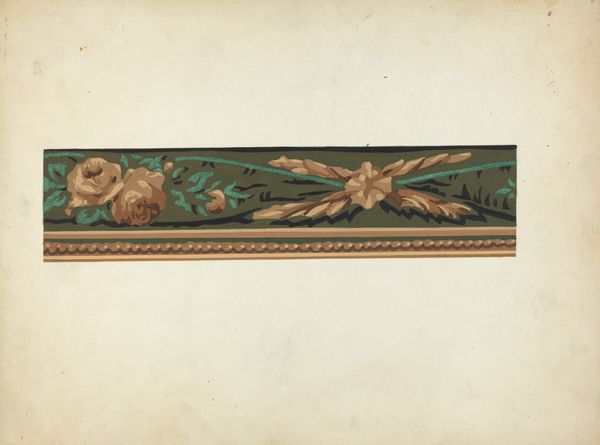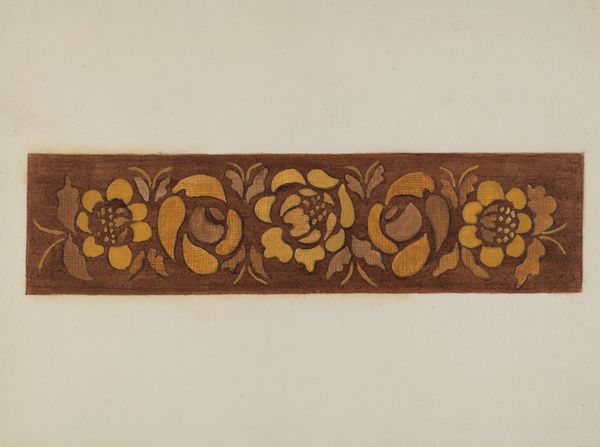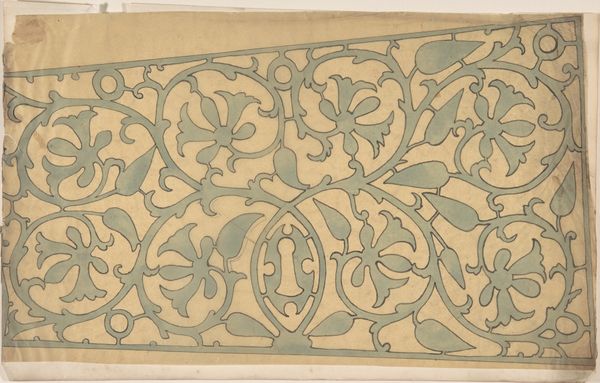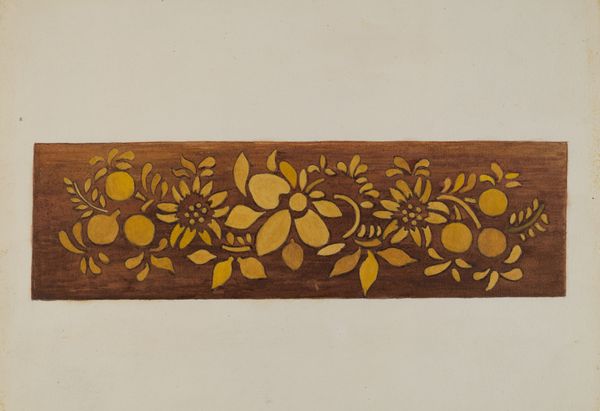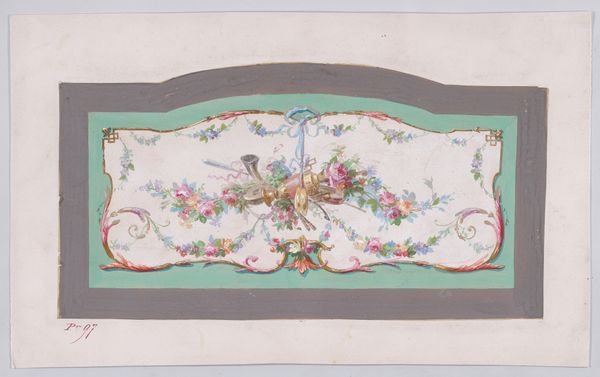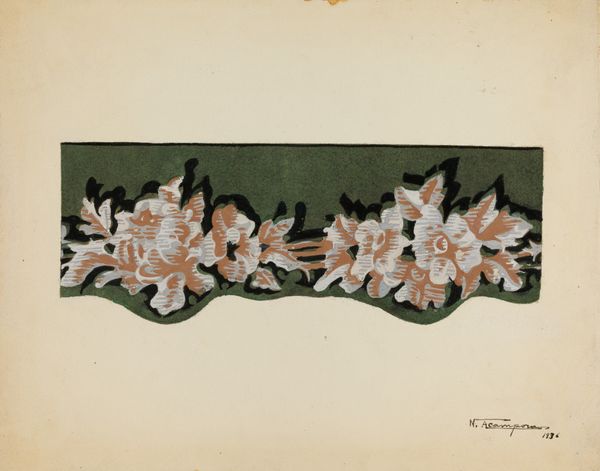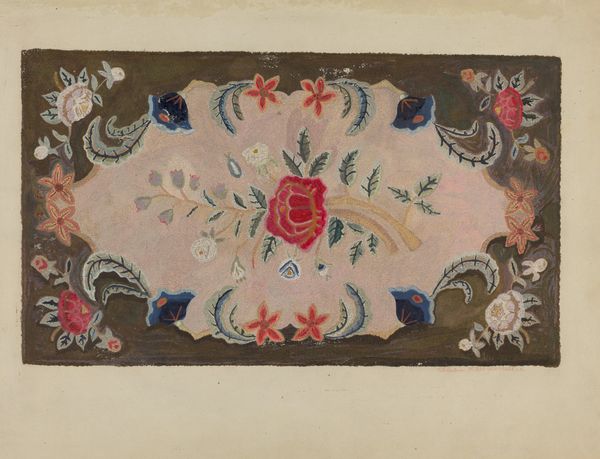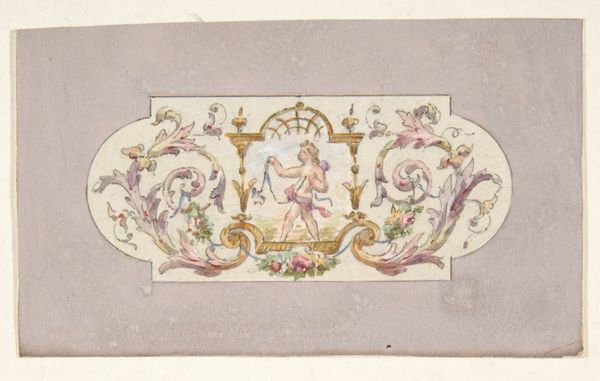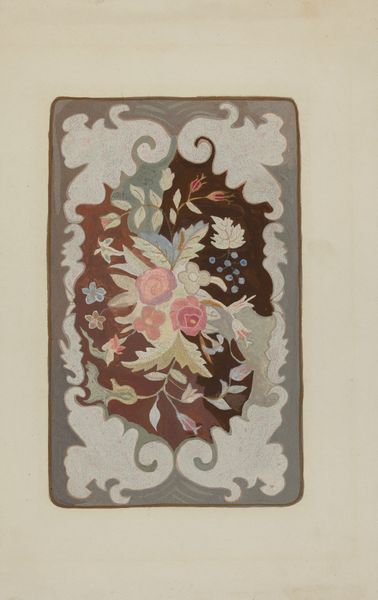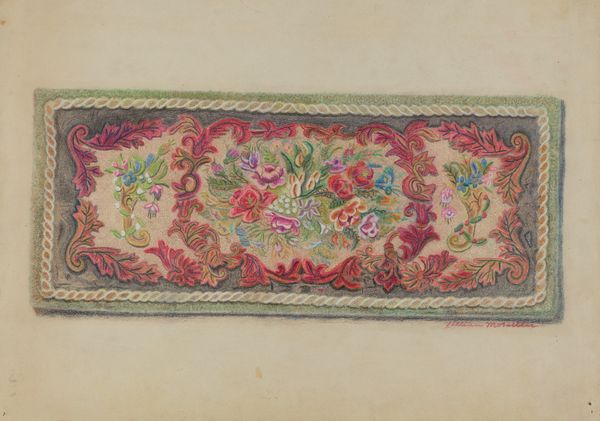
drawing, mixed-media, watercolor
#
drawing
#
mixed-media
#
water colours
#
watercolor
#
watercolour illustration
#
decorative-art
Dimensions: overall: 22.9 x 30.6 cm (9 x 12 1/16 in.) Original IAD Object: 2 1/4" wide
Copyright: National Gallery of Art: CC0 1.0
Curator: Immediately, I get this intense feeling of nostalgic domesticity from this design. Editor: And rightly so! We are looking at John Garay's "Wall Paper Border," dating back to approximately 1937, rendered with a combination of drawing, watercolor, and other mixed media. Curator: Ah, Garay, known for his commercial designs during the pre- and post-war era. It's fascinating to see the remnants of past eras clinging to contemporary culture. Editor: The color choices—the muted rose, the gold accents, even that strangely soothing green—they’re like faded echoes of a more innocent time, aren’t they? The repetition must have offered a sense of comfort to people at home. Curator: Indeed. Wallpaper like this played a critical role in defining interior space, especially during a period of economic hardship and political uncertainty. It allowed people to cheaply imprint personality. That repetitive ornamental design invokes ideas of stability and familiarity for families—visual assurance. Editor: Absolutely, though that rose color, combined with the deeper maroon of the border—it creates almost an uneasy tension under the surface. The roses feel somewhat artificial, more of a symbol than real flora. The ornate design feels less celebratory and more melancholic—almost oppressively structured in design. Curator: I perceive a degree of standardization in Garay's aesthetic—aimed for the mass market. Wallpapers, especially in the late 30s, represented not only personal taste, but participation in a visual culture increasingly influenced by industrialization and mass production. Editor: Yes! In its own peculiar way, it’s incredibly affecting; it almost acts as a cultural timestamp from that era. These flowers aren't fresh, rather a symbol and idea, representing manufactured emotions and memories through decorative design. Curator: So, in revisiting it now, the wallpaper invites reflections on how notions of 'home' and 'beauty' are mediated through mass culture, and how these designs have historically shaped—and continue to shape—our everyday environments. Editor: Beautifully stated. Ultimately, revisiting a piece like this gives one a potent reminder of the artfulness woven into the everyday fabric of history—reminding us of just how complex a thing beauty and the art industry really are.
Comments
No comments
Be the first to comment and join the conversation on the ultimate creative platform.
